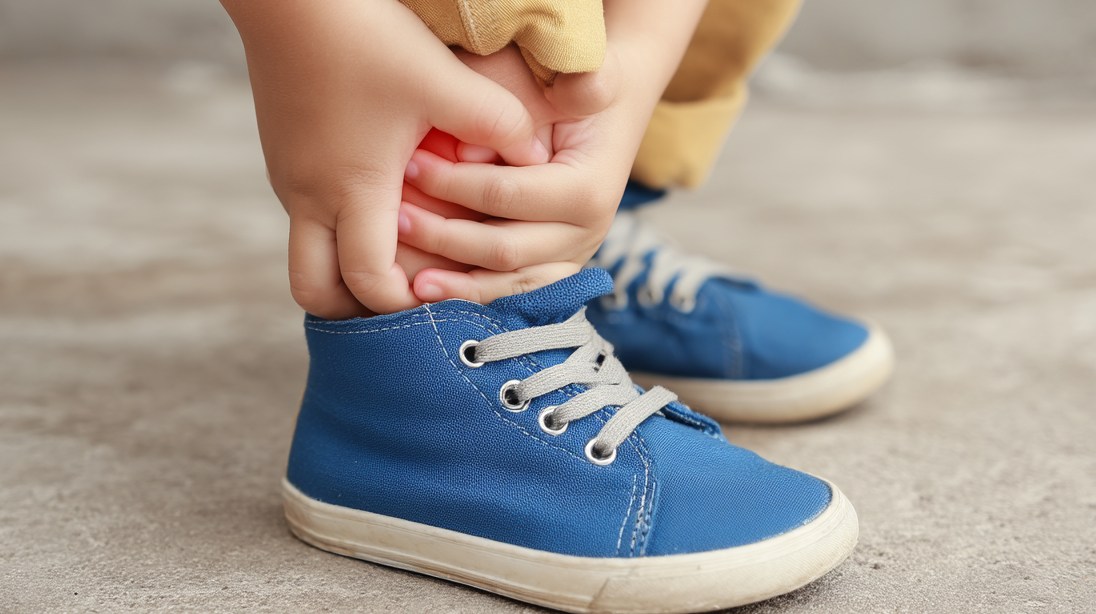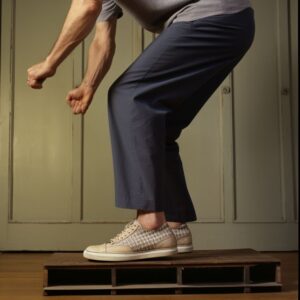If your child has been complaining about heel pain, especially after running around or playing sports, you’re not alone. It’s a common concern for many parents—and one that often leads to a visit to the clinic. One of the most frequent culprits? A condition known as Sever’s Disease.
We recently caught up with the team at AppliedMotion Physiotherapy and Podiatry in Perth https://appliedmotion.com.au/ to get their expert take. Simone, one of their experienced physiotherapists, shared some fantastic insights on how to recognise the early signs and manage the condition effectively. He’s helped many families navigate this challenge with a practical, down-to-earth approach, always focused on keeping kids active and pain-free as they grow.
In this guide, we’ll explain what Sever’s Disease is, the symptoms to watch for, and how you can support your child’s recovery. Whether your little one is a budding footy star or just loves tearing around the school oval, you’ll find practical advice to help them stay on their feet—safely and confidently.
What Is Sever’s Disease?
Despite the dramatic name, Sever’s Disease isn’t a disease in the traditional sense. It’s more like a growing pain with a bit of a bite. Officially known as calcaneal apophysitis, it happens when the growth plate in the heel bone gets inflamed. The heel bone (called the calcaneus) has a softer bit at the back called a growth plate, which is made of cartilage. This area is still developing and can get a bit cranky when there’s too much stress placed on it.
Sever’s usually pops up in kids aged between 8 and 12. That’s the age when they tend to hit a growth spurt and start getting more into sports or physically intense play. When their bones are growing quickly, the muscles and tendons sometimes struggle to keep up. The Achilles tendon pulls on the heel, and if that heel isn’t quite ready for all that activity, it can get sore and inflamed.
Think of it like this: your child’s bones are under construction. The growth plate is like the scaffolding. If there’s too much pushing, pulling or stomping around, it gets irritated. And when it’s irritated, it lets them know.
Common Signs and Symptoms
The main sign that Sever’s Disease might be rearing its head is heel pain, especially after your child’s been on the move. It usually shows up after sports practice or a run around the schoolyard, and tends to calm down a bit after they’ve rested. Some kids describe it as a dull ache, others say it’s more of a sharp or throbbing pain.
You might also notice a bit of limping or your child walking on their tiptoes to avoid putting pressure on their heel. In some cases, the heel might look slightly swollen or feel tender to the touch. Every child is different, and sometimes the signs are subtle. But if they’re consistently complaining about pain in the back of their heel, especially after activity, it’s worth paying attention.
The tricky part is that kids are often pretty tough. They might brush it off or try to play through the pain, which can make things worse over time. So if you see any of these signs sticking around for more than a few days, it’s probably time to get it checked out.
Causes and Risk Factors
Sever’s Disease is usually a mix of factors rather than one single cause. A big one is repetitive stress on the heel from activities like running, jumping, or sudden stops and starts. Sports like soccer, basketball, gymnastics, and even just playing tag can all pile pressure onto that growing heel.
Rapid growth spurts are another biggie. The bones lengthen fast, and sometimes the muscles and tendons don’t stretch out quickly enough to keep pace. That imbalance puts extra strain on the heel. Tight calf muscles or a tight Achilles tendon can add even more pressure to the area.
Improper footwear can also be a contributor. Shoes that are too flat, too worn out, or just not supportive enough don’t give the heel the cushioning it needs. Kids who have feet that roll inwards (a condition called overpronation) or high arches might be at even greater risk.
Treatment Options
Rest and Activity Modification
First things first: rest. That doesn’t mean your child needs to stay glued to the couch, but they do need to take a break from the high-impact stuff. Football, running races, trampoline tricks – they all might need to be swapped out temporarily for gentler activities like swimming or cycling. The idea is to keep them moving without irritating the heel any further.
It can be tough to convince an active kid to take it easy, but a short break now often means a faster recovery and less frustration later on.
Ice Therapy
Ice is your best friend when it comes to calming inflammation. A wrapped ice pack placed on the sore heel for about 15 to 20 minutes can really help bring the swelling down. Do it a few times a day, especially after your child’s been up and about. Just make sure there’s a cloth or towel between the ice and the skin to avoid any cold burns. We’ve seen a few red-nosed parents learning that one the hard way.
Stretching and Strengthening
Sometimes, tight muscles are part of the problem. Gentle stretching, especially for the calves, can ease some of that pulling on the heel. Strengthening the muscles around the ankle and foot can also provide better support and reduce stress on the area.
Don’t worry about becoming a stretching expert overnight. A physio or podiatrist can show you a few simple moves that your child can do at home. It doesn’t need to be complicated – consistency is what matters most.
Supportive Footwear
Shoes make a big difference. You want something with good arch support, cushioning in the heel, and enough structure to support the foot as it grows. Stay away from super flat shoes or flimsy trainers that have seen better days.
If you’re not sure what to look for, come in for a footwear assessment. Here at AppliedMotion Physiotherapy and Podiatry in Leederville, we can help you pick the right pair and even suggest insoles or orthotics if your child’s foot shape needs a bit of extra help.
Pain Relief
Over-the-counter pain medications like ibuprofen can help manage pain and inflammation, especially if your child is really uncomfortable. Just make sure to check with your GP or pharmacist to get the right dosage based on their age and weight. Medication shouldn’t be the first solution or a long-term fix, but it can offer some relief while you’re working on the root causes.
Supporting Your Child Through Recovery
Watching your child struggle with pain can be tough, especially when they just want to get back to doing what they love. A big part of the recovery process is helping them understand what’s going on and reassuring them that they won’t be stuck on the sidelines forever.
Talk to them openly about what they’re feeling. Let them know it’s okay to be frustrated, and that healing takes a bit of time. Encourage them to keep up with their stretches or physio routines and give them a high-five when they do. Small bits of encouragement can help them stay motivated, even when things feel slow.
And remember, some movement is better than none. Keeping their body active, even in small ways, can actually help speed up the recovery and keep their mood lifted too.
When to See a Professional
If your child’s heel pain keeps hanging around despite all the home care, or if it starts getting worse, it’s definitely time to see someone. Same goes if the pain is stopping them from walking properly, sleeping well, or participating in daily activities.
A podiatrist or doctor can have a proper look, rule out any other possible issues, and tailor a treatment plan specifically for your child. At AppliedMotion, we offer gait analysis, hands-on therapy, custom orthotics if needed, and targeted exercise programmes. We look at the full picture to help your child not only get better but stay better.
Keeping Those Feet Happy in the Long Run
Once the pain is under control, it’s worth putting a few good habits in place to keep those feet in tip-top shape. Encourage your child to wash and dry their feet properly each day, especially between the toes. That bit gets missed more often than you’d think.
Socks made from breathable fabrics like cotton can help with sweaty feet, which isn’t just uncomfortable – it can lead to other problems like blisters or fungal infections.
Regular foot checkups are a smart move too. You don’t have to wait for something to go wrong. Catching things early, like an awkward walking pattern or a shoe that’s wearing out unevenly, can save a lot of trouble down the road.
Making time for foot health now means fewer issues later and a better chance of your child staying active and pain-free through all their growing years.
A Few Final Thoughts
Sever’s Disease can feel like a bit of a curveball when it first shows up, especially if your child is normally full of beans and constantly on the move. But it’s manageable, and with the right care, most kids bounce back just fine.
The key is spotting it early, easing off the high-impact stuff, and giving the heel time to settle. With the help of supportive shoes, a bit of ice, and a solid stretching routine, your child will be back to running around in no time.
If you ever feel unsure about what to do next or just want a bit of reassurance, don’t hesitate to reach out to a healthcare professional. We’re here to help, and sometimes a quick check-in is all it takes to set your mind at ease.
Looking after growing feet is a team effort. And with a little patience and the right approach, your child can get back to doing what they love – pain free and full speed ahead.



